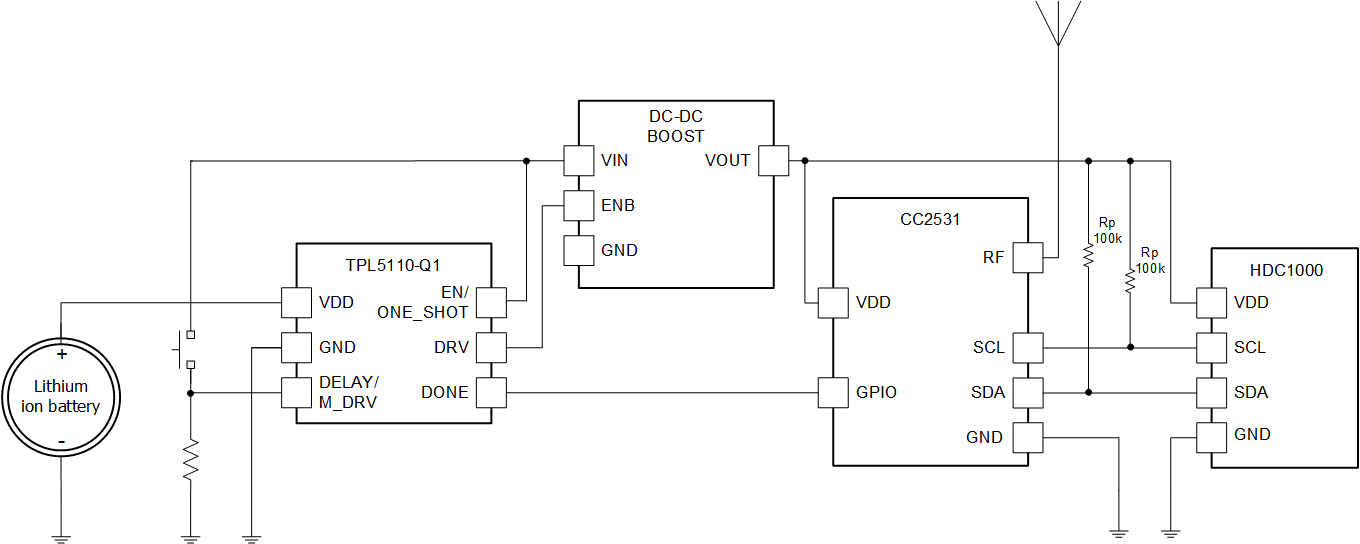SNAS681A February 2017 – September 2021 TPL5110-Q1
PRODUCTION DATA
- 1 Features
- 2 Applications
- 3 Description
- 4 Revision History
- 5 Pin Configuration and Functions
- 6 Specifications
- 7 Detailed Description
- 8 Application and Implementation
- 9 Power Supply Recommendations
- 10Layout
- 11Device and Documentation Support
- 12Mechanical, Packaging, and Orderable Information
Package Options
Mechanical Data (Package|Pins)
- DDC|6
Thermal pad, mechanical data (Package|Pins)
Orderable Information
8.2 Typical Application
The TPL5110-Q1 can be used in environment sensor nodes such as humidity and temperature sensor node. The sensor node has to measure the humidity and the temperature and transmit the data through a low power RF micro such as the CC2531. Since the temperature and the humidity in home application do not change so fast, the measurement and the transmission of the data can be done at very low rate, such as every 30 seconds. The RF micro should spend most of the time in counting the elapsed time, but using the TPL5110-Q1 it is possible to complete turn off the RF micro and extend the battery life. The TPL5110-Q1 will turn on the RF micro when the programmed time interval elapses or for debug purpose with the manual MOSFET Power ON switch.
 Figure 8-1 Sensor Node
Figure 8-1 Sensor Node